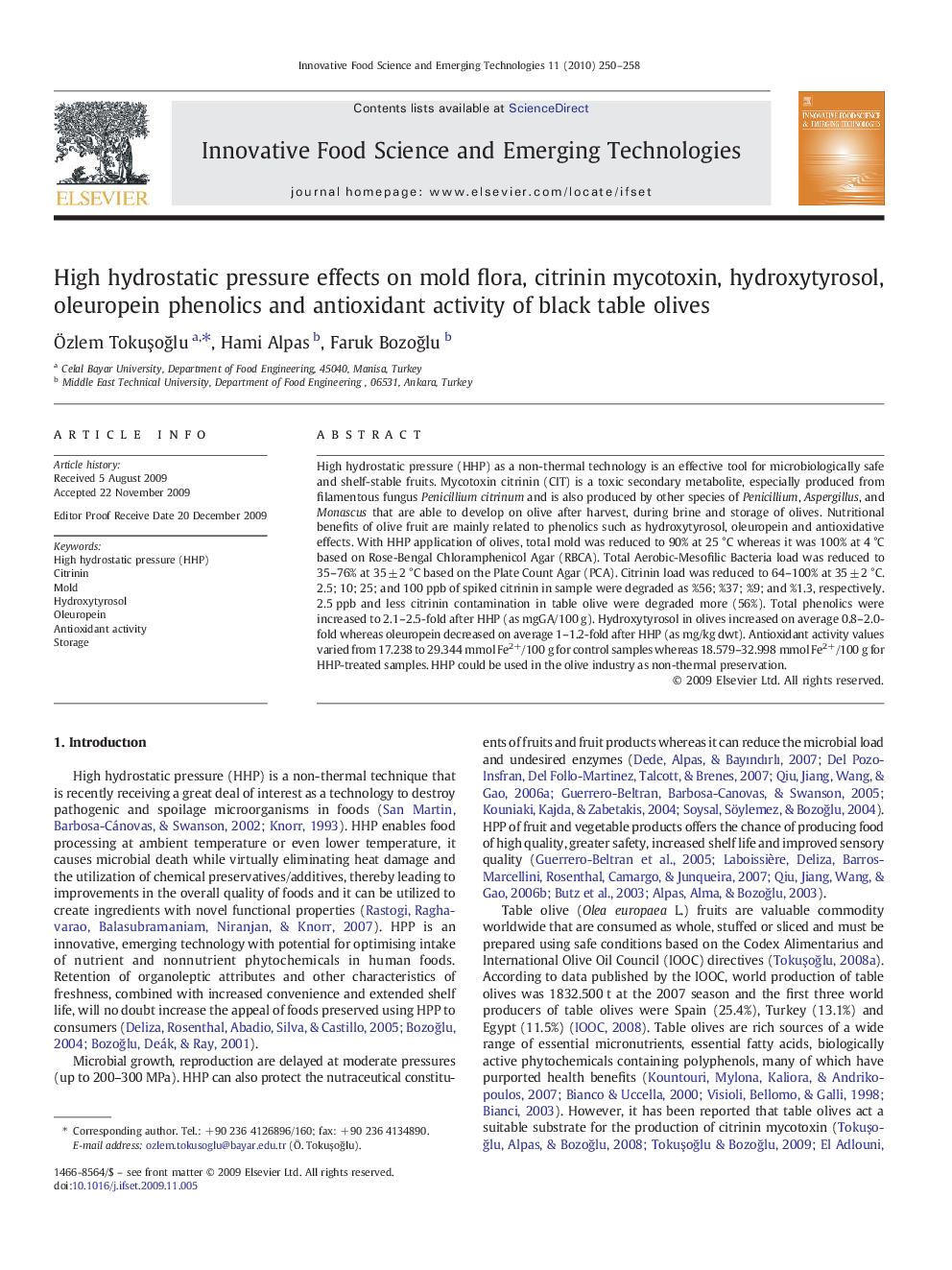| Article ID | Journal | Published Year | Pages | File Type |
|---|---|---|---|---|
| 2086930 | Innovative Food Science & Emerging Technologies | 2010 | 9 Pages |
High hydrostatic pressure (HHP) as a non-thermal technology is an effective tool for microbiologically safe and shelf-stable fruits. Mycotoxin citrinin (CIT) is a toxic secondary metabolite, especially produced from filamentous fungus Penicillium citrinum and is also produced by other species of Penicillium, Aspergillus, and Monascus that are able to develop on olive after harvest, during brine and storage of olives. Nutritional benefits of olive fruit are mainly related to phenolics such as hydroxytyrosol, oleuropein and antioxidative effects. With HHP application of olives, total mold was reduced to 90% at 25 °C whereas it was 100% at 4 °C based on Rose-Bengal Chloramphenicol Agar (RBCA). Total Aerobic-Mesofilic Bacteria load was reduced to 35–76% at 35 ± 2 °C based on the Plate Count Agar (PCA). Citrinin load was reduced to 64–100% at 35 ± 2 °C. 2.5; 10; 25; and 100 ppb of spiked citrinin in sample were degraded as %56; %37; %9; and %1.3, respectively. 2.5 ppb and less citrinin contamination in table olive were degraded more (56%). Total phenolics were increased to 2.1–2.5-fold after HHP (as mgGA/100 g). Hydroxytyrosol in olives increased on average 0.8–2.0-fold whereas oleuropein decreased on average 1–1.2-fold after HHP (as mg/kg dwt). Antioxidant activity values varied from 17.238 to 29.344 mmol Fe2+/100 g for control samples whereas 18.579–32.998 mmol Fe2+/100 g for HHP-treated samples. HHP could be used in the olive industry as non-thermal preservation.
